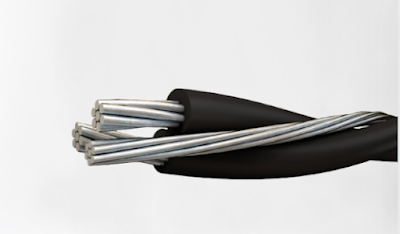 |
| 33kV Jointing |
In the realm of electrical engineering, jointing plays a crucial role in ensuring the integrity and reliability of high-voltage power systems. In particular, 33kv cables jointing presents unique challenges due to the higher voltages involved and the critical nature of the infrastructure. In this comprehensive guide, we'll delve into the challenges involved in 33kV jointing and explore strategies for overcoming them effectively. From technical complexities to safety considerations, we'll address key issues faced by electrical engineers and jointing professionals in the field.
Understanding 33kV Jointing:
Before diving into the challenges, let's first establish what 33kV jointing entails. A 33kV joint is a connection point where two or more
high voltage cables are joined together to ensure continuity of electrical supply. These joints are typically used in electrical installations such as substations, distribution networks, and industrial facilities to transmit and distribute electricity at 33,000 volts.
Challenges Involved in 33kV Jointing:
1. Technical Complexity:
Jointing at 33kV involves complex technical procedures and precise craftsmanship. The higher voltages and currents present greater challenges in terms of insulation, cable termination, and overall joint performance. Ensuring proper alignment, insulation resistance, and impedance matching are critical for the safe and reliable operation of 33kV joints.2. High Voltage Hazards:
Working with 33kV power systems poses significant safety risks due to the potential for electric shock, arc flash incidents, and equipment damage. Proper training, personal protective equipment (PPE), and adherence to safety protocols are essential to mitigate these hazards and prevent accidents during jointing operations.3. Cable Preparation and Termination:
Preparing and terminating high-voltage cables at 33kV requires meticulous attention to detail and specialized tools and techniques. Proper cable stripping, insulation removal, and crimping are essential for achieving reliable electrical connections and minimizing the risk of insulation breakdown or overheating.4. Environmental Factors:
External environmental factors such as temperature variations, moisture ingress, and mechanical stress can affect the performance and longevity of 33kV joints. Selecting appropriate cable jointing materials, sealants, and enclosures that can withstand harsh environmental conditions is crucial for ensuring the durability and reliability of the jointing system.
5. Regulatory Compliance:
Compliance with regulatory standards and industry best practices is paramount in 33kV jointing to ensure the safety and reliability of electrical installations. Engineers and jointing professionals must stay abreast of relevant regulations, codes, and standards governing high-voltage jointing practices and equipment specifications.6. Quality Assurance and Testing:
Thorough quality assurance and testing procedures are essential to validate the integrity and performance of 33kV joints before commissioning. Insulation resistance testing, partial discharge measurements, and high-potential (Hi-Pot) testing are common techniques used to assess the insulation integrity and electrical continuity of joints under high-voltage conditions.
Strategies for Overcoming Challenges:
1. Comprehensive Training and Certification:
Provide comprehensive training and certification programs for jointing professionals to equip them with the knowledge, skills, and competencies required for 33kV jointing. Training should cover technical theory, practical skills, safety protocols, and regulatory compliance to ensure safe and efficient jointing operations.
2. Investment in Specialized Tools and Equipment:
Invest in specialized tools, equipment, and instrumentation designed for 33kV jointing to facilitate accurate cable preparation, termination, and testing. High-quality crimping tools, insulation strippers, heat shrink materials, and cable jointing kits are essential for achieving reliable and durable joints.
3. Adoption of Best Practices and Standards:
Emphasize adherence to industry best practices, standards, and guidelines for 33kV jointing, such as those published by organizations like the International Electrotechnical Commission (IEC), Institute of Electrical and Electronics Engineers (IEEE), and relevant national regulatory authorities. Establish robust quality management systems to ensure compliance with standards and regulatory requirements.
4. Collaboration and Knowledge Sharing:
Foster collaboration and knowledge sharing among industry stakeholders, including engineers, jointing professionals, manufacturers, and regulatory bodies. Participate in industry forums, seminars, and workshops to exchange insights, experiences, and lessons learned related to 33kV jointing challenges and solutions.5. Continuous Improvement and Innovation:
Promote a culture of continuous improvement and innovation in 33kV jointing practices by encouraging feedback, evaluating performance metrics, and implementing corrective actions. Embrace emerging technologies and advancements in jointing materials, techniques, and testing methodologies to enhance the reliability and efficiency of 33kV jointing operations.
Conclusion:
In conclusion, 33kV jointing presents a myriad of challenges that require careful consideration and strategic planning to overcome effectively. From technical complexities to safety hazards and regulatory requirements, addressing these challenges demands a comprehensive approach that encompasses training, equipment, standards compliance, collaboration, and continuous improvement. By investing in training and certification, leveraging specialized tools and equipment, adhering to best practices and standards, fostering collaboration, and embracing innovation, electrical engineers and jointing professionals can navigate the complexities of 33kV jointing and ensure the safe and reliable operation of high-voltage electrical installations.Visit also:




Comments
Post a Comment